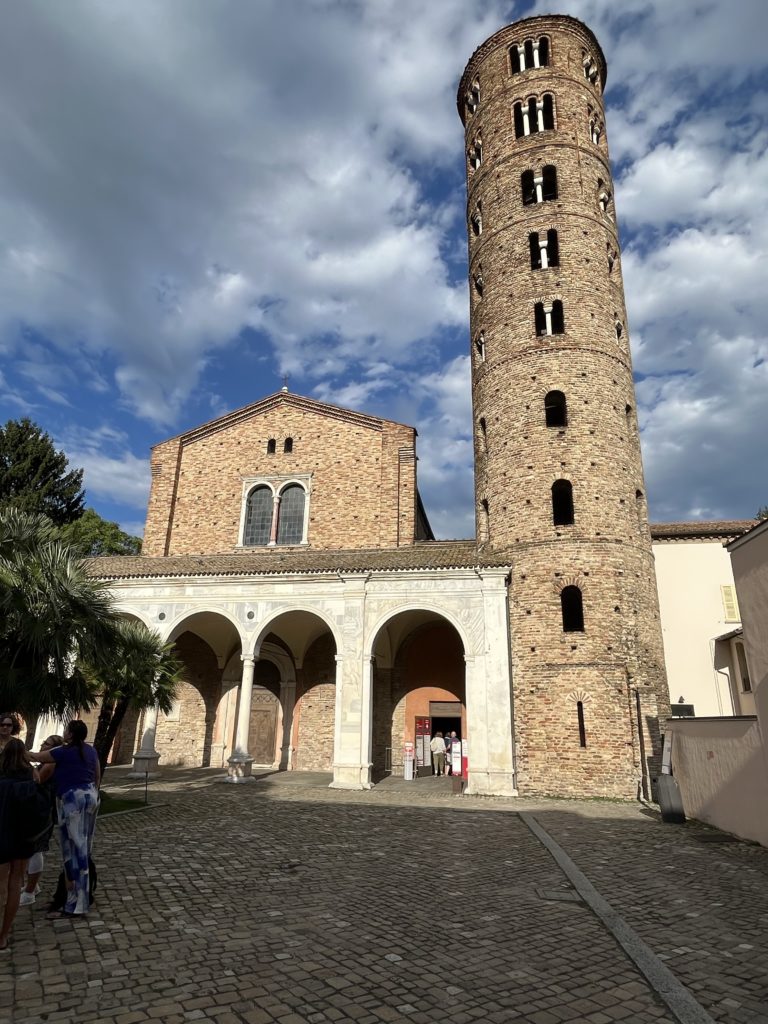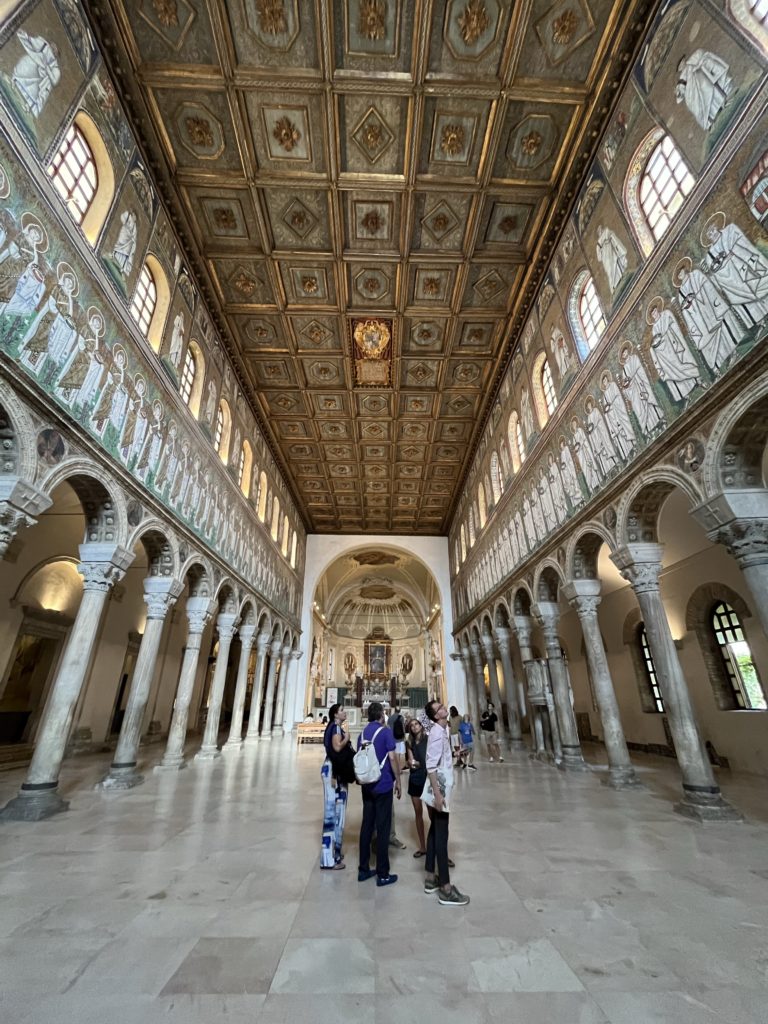
Today, we rented a car in Florence and drove to Ravenna. As we left Florence, I realized how much this place had grown on me. Florence is a walking city, and that suits me. Cars seem strangely out of place here on the cobblestone streets, unwelcome intruders that are given little attention by its citizens. People love Florence for its art, but its history rivals its art, particularly during the time of Savonarola. I do hope we are able to return in the future.
I should also mention that the practice of packing worn-out clothes and discarding them along the way has been both convenient and a spiritually refreshing hedge against materialism, and its better than self-flagellation or wearing a hairshirt. Other members of the GSB team have adopted the practice–discarding clothes not wearing hairshirts.
We arrived in Ravenna late in the afternoon but in enough time to see the Basilica of Saint Apollinare, Dantes tomb, and the Basilica of Saint Francesco (the church where Dante’s funeral was held).

At the Basilica of Saint Apollinare, we were confronted with the same issue we will face tomorrow: the Arianism of Theodoric and the Arians who occupied Ravenna for nearly 50 years. The mosaics in the church are said to reflect the Arian view of Jesus; but I wonder if art historians are reading too much into the mosaic.
The Arians did have a different view of Jesus, believing that because Jesus was “begotten” of the Father that there was a time when He was not, and therefore is not coeternal with the Father. Arianism was condemned as heresy at the Council of Nicea in 325 A.D. that was overseen by Constantine, but that did not put an end to Arianism. Around 340 A.D., an Arian named Ulfilas, began evangelizing the Goths and helped them create a written language. This led to the various Germanic tribes adopting Arianism.
But the question for us is, “Were the Arians Christian?” Or, to put in evangelical terms, “Could an Arian be saved?” Hopefully, our salvation is not conditioned on our theology being 100% correct. If you think it should, just read a little about monotheletism or miaphysitism, and ask yourself what you would have believed about Jesus’ will or His nature if you had been forced to choose back then (or even now), without knowing what many brilliant religious leaders had debated and finally settled on as orthodox.
However, there are things one must get right about Jesus, and that is to believe He is God, and that by trusting in His sacrificial death on the cross and resurrection one is saved (Romans 10:9-10). I say that as a non-theologically trained lawyer, and having failed at finding any helpful discussion on the internet about whether Arians could have been saved. I welcome any comments here to the contrary.
What is almost certainly true is that the Arians’ heretical views made it easer for them and Orthodox Christians to go to war against one another. Rome was sacked by the Arian Visigoths in 410 A.D., the Arian Vandals in 455 A.D., and finally by the Arian Goth, Odoacer, in 476 A.D.
In 493 A.D., Theoderic defeated Odoacer in Italy and began a rule in Italy by the Arians that would last nearly 150 years, and that is the period that will be our focus while in Ravenna. GS
